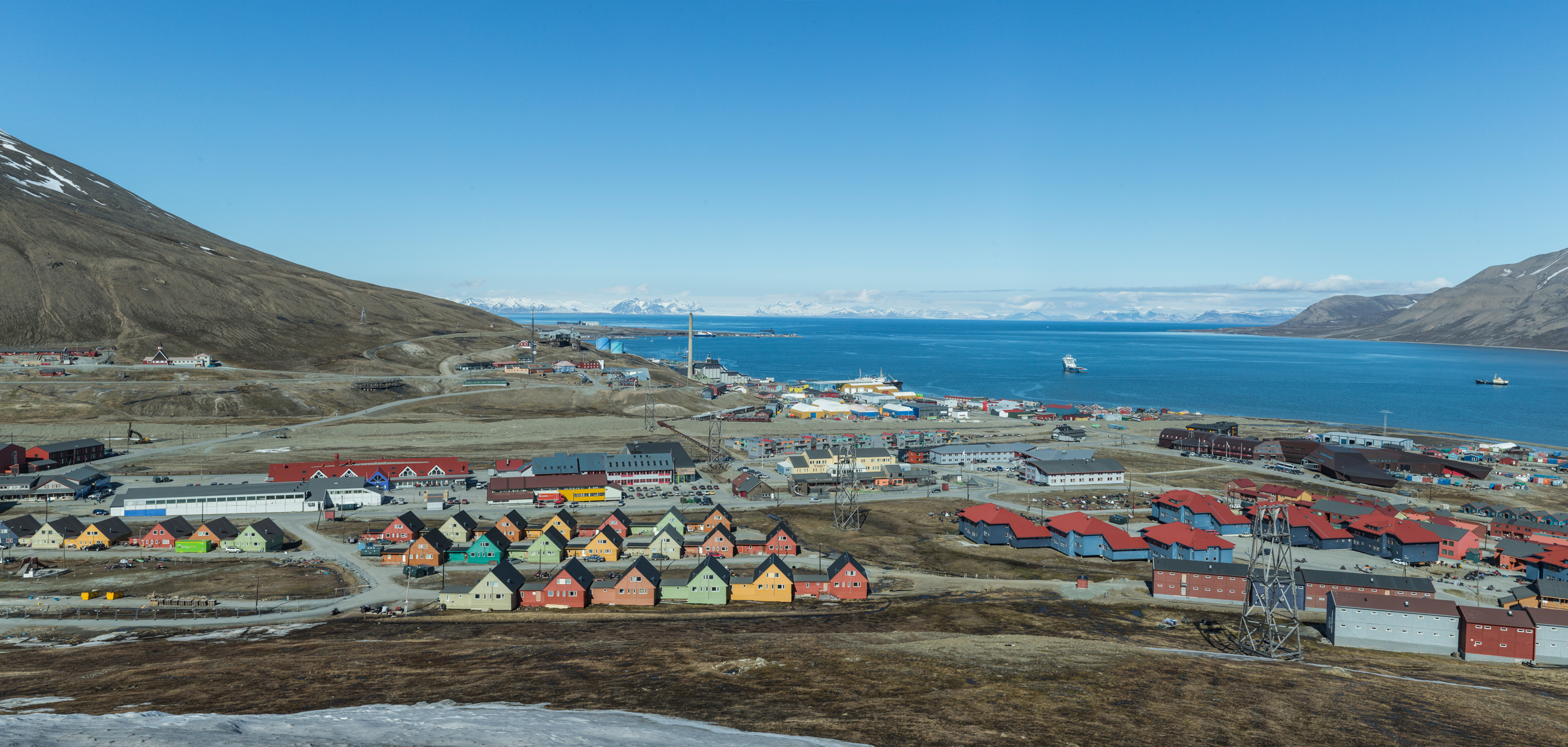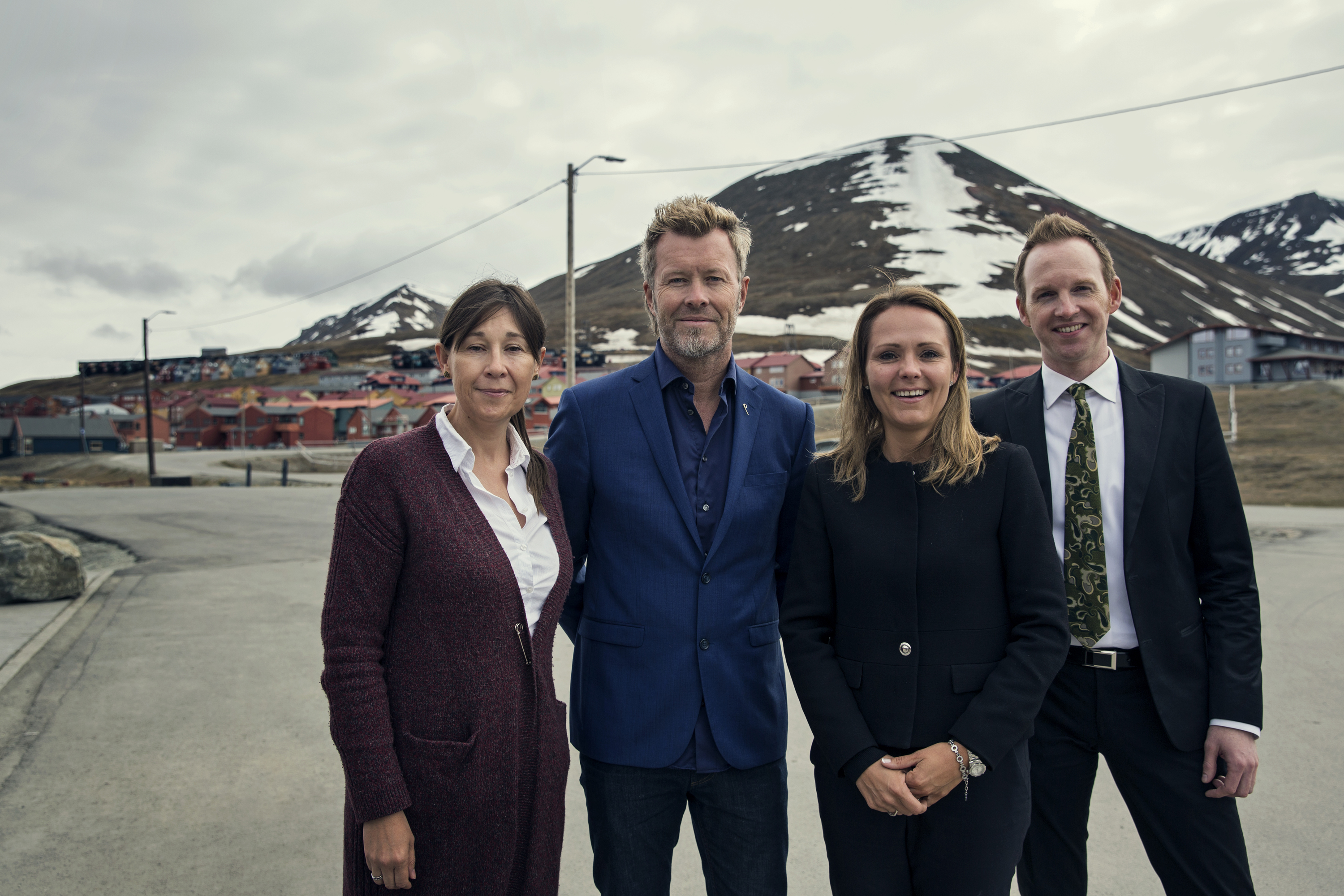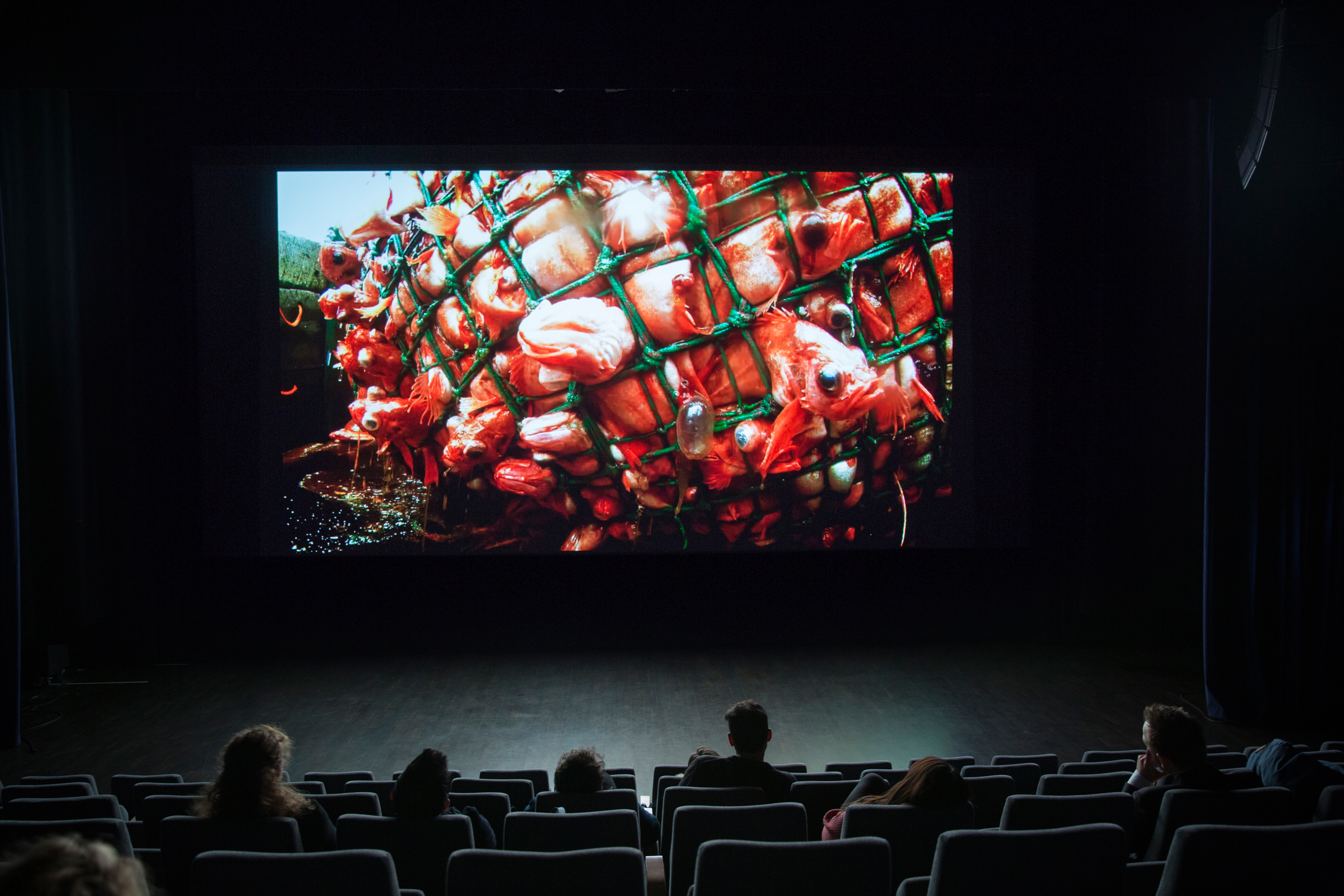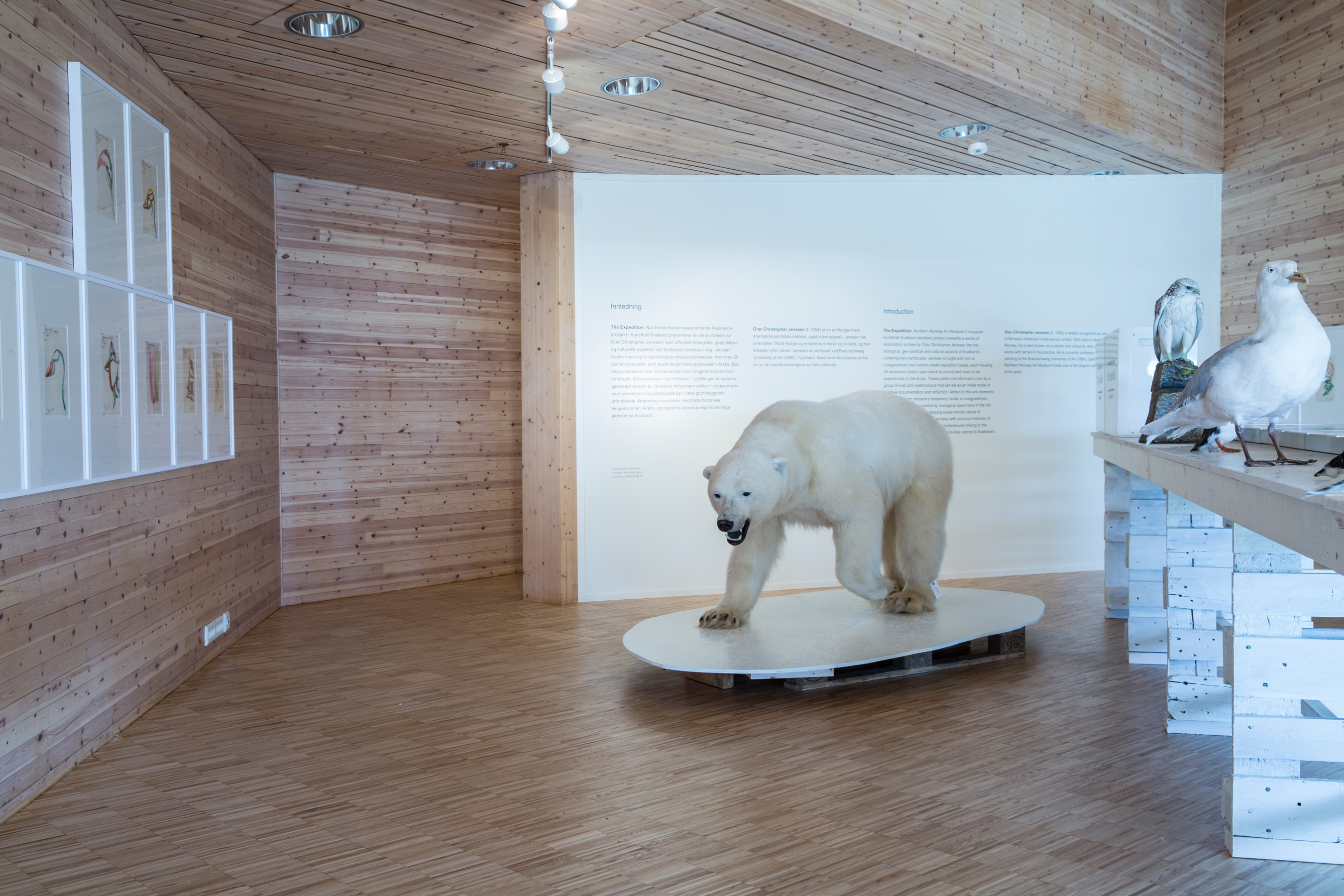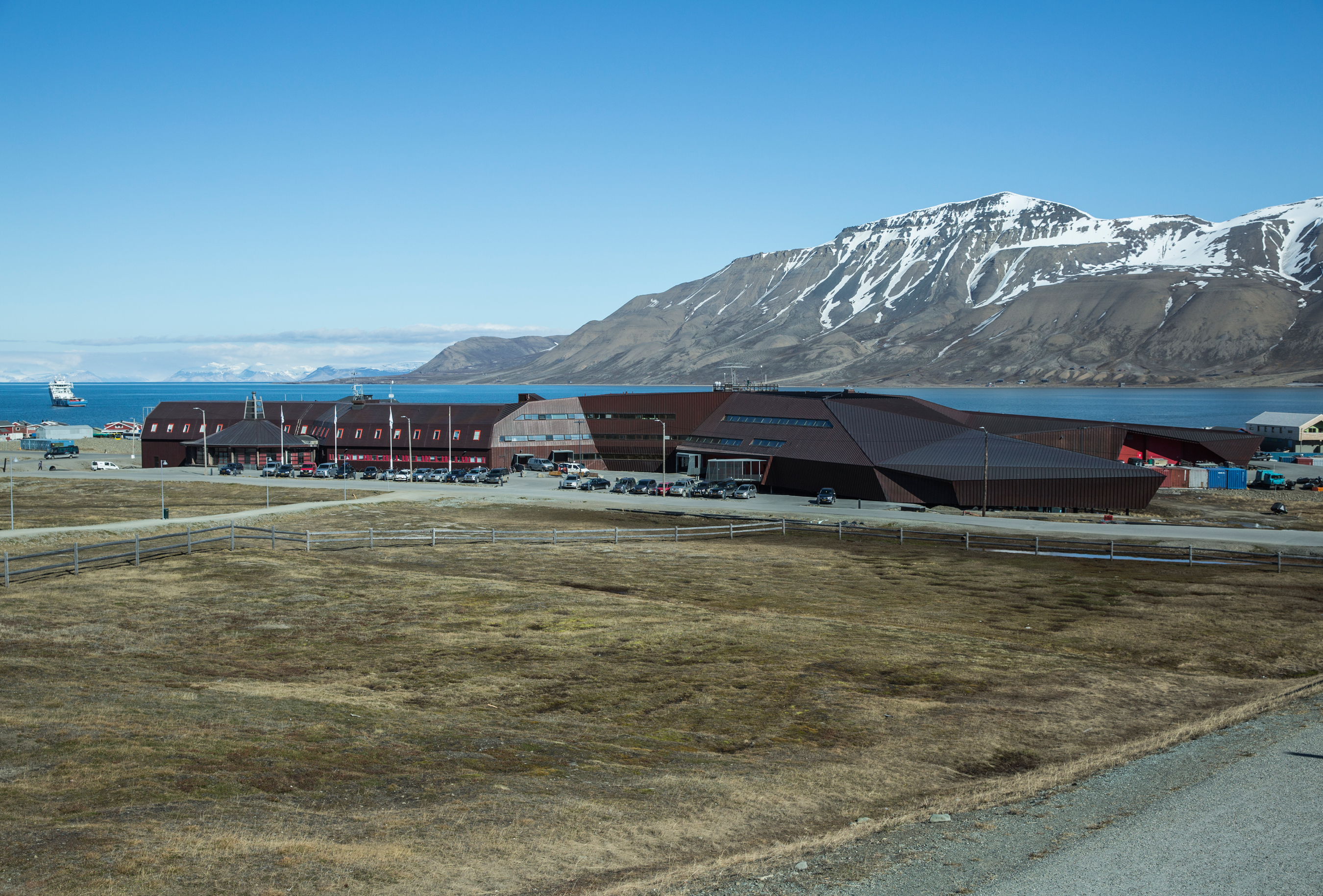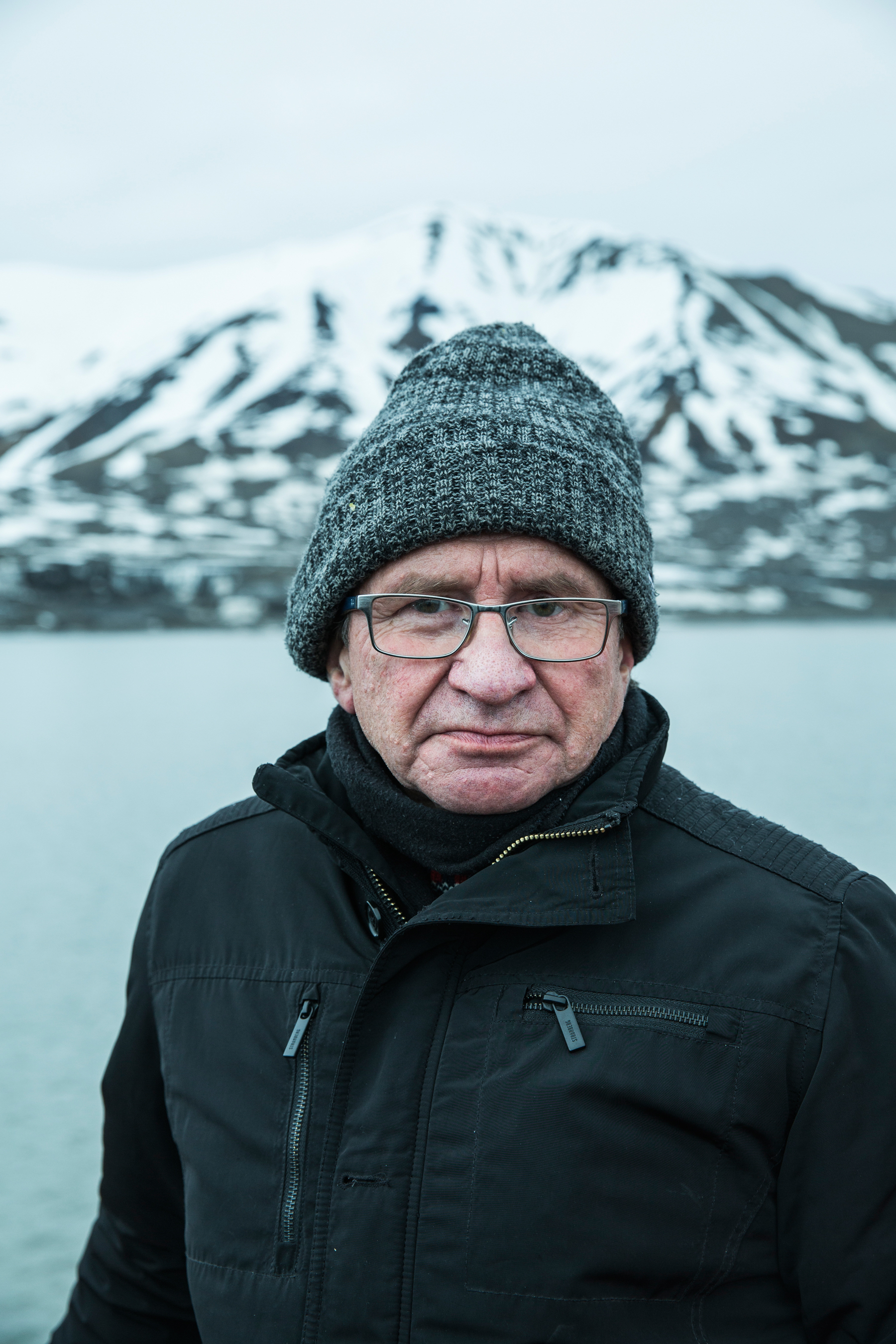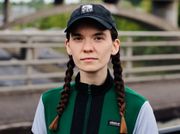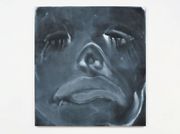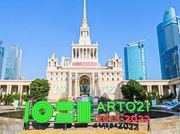Great expeditions: A report from the Edge of the World
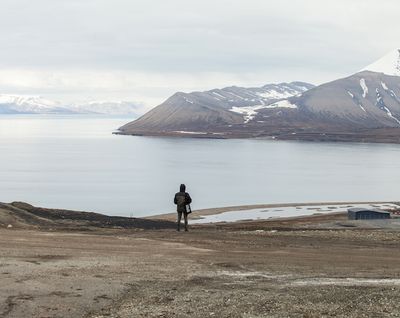
Image: A view of Longyearbyen, Svalbard. © Herman Dreyer, OCA.
It took four flights to get to the edge of the world, where the midnight sun hangs high in the sky from April to August. The journey started in Zurich, passed through Brussels and Oslo, before stopping over in Tromsø, after which we finally landed in Longyearbyen, the world's northernmost permanent settlement. Located in Svalbard, an archipelago in the Arctic Ocean and found midway between mainland Norway and the North Pole, Svalbard has had many lives. In the 17th and 18th centuries, it was the base for the gruesome yet lucrative whaling industry. When the industry died out, it became home to a thriving mining community in the 19th and 20th centuries. Today, with a few working mines, it is a Norwegian protectorate that is reinventing itself not only as a destination for tourism and scientific research, but also as a cultural centre in its own right.
All of Svalbard's past and present lives were conjured up for the purpose of our visit: a three-day international cross-disciplinary conference organised by the Office for Contemporary Art Norway (OCA), and the Northern NorwayArt Museum (NNKM). Titled_'_Thinking at the Edge of the World', Katya García-Antón (director, OCA) and Jérémie Michael McGowan (director, NNKM) wrote in their introduction letter that the intention of the gathering was to 'reflect upon, and perhaps even begin refashioning, some of the central debates of our day—within the arts and beyond'. The conference brought together figures from a variety of disciplines, including A-ha musician-turned-artist, Magne Furuholmen, and design historian Emily King, who along with Nadjib Achaibou, explored the role of scent in the collective experience of those attending the conference, making reference to the fact that Chanel No.5 was inspired by a visit perfumer Ernest Beaux took to the Arctic Circle.
The proceedings opened with a pre-programme framed under the title 'OCEANS, FOOD, MYTHS, AND SEA MONSTERS', which included the launch of an exhibition at the Kunsthall Svalbard, established within the Svalbard Museum on Longyearben by the NNKM in February 2015. Here, artist Olav Christopher Jenssen—the first artist to participate in the Northern Norway Art Museum's Artist in Residence programme at Svalbard—presented watercolours on paper and expedition slides used to record impressions of the landscape. At midnight, a screening was held of Lucien Castaing-Taylor and Véréna Paravel's powerful 2012 documentary film, Leviathan, which offers a sensory study of the North Atlantic fishing industry from the departure point of New Bedford, on which Herman Melville's Moby Dick was based.
The next day, the conference officially began under an expansive title:_'_LANDS, SETTLEMENTS, PEAKS, BONES, AND APPROPRIATION'. Talks included a conversation between curator and writer Candice Hopkins and Sami activist Niillas Somby, through which we learned of the plight of the Sami, the indigenous people of the Arctic North. (After engaging in acts of civil unrest in Norway in defence of Sami rights, Somby took refuge in British Columbia, where he told us seven Aboriginal bands adopted him in a traditional ceremony on William's Lake). Following this, a fascinating panel moderated by Katia García-Antón took place between Robert Templer, director of the Center for Conflict, Negotiation and Recovery (CCNR) at the Central European University in Budapest, Hungary; Elena Isayev, Professor of Ancient History at the University of Exeter, UK; and architect, researcher and lecturer at the Umeå School of Architecture in Sweden, Alberto Altés Arlandis.
Templer spoke about research the CCNR are conducting now in Syria, and pointed to an interest in exploring the connections between Aleppo and Norway, 'of which there are a surprising number'. Templer pointed to the five-year drought that preceded the civil war, which Templer linked directly to the country's current conflict; Syria was the first country in the world to withdraw seeds from the Seed Bank, located on Svalbard and otherwise known as 'The Doomsday Vault'. (Scientists unable to continue important research at a gene bank in Aleppo decided to withdraw seeds and plant them in Lebanon and Morocco in order to continue their research). 'What we see in this conflict is a lack of empathy', Templer noted, referring to Syria. 'And I wonder if connections will help people engage or reengage'. To this end, Isayev offered a historical cartography in which migration and mobility was the norm, not the exception. 'The ancient world I look at has no nation-states or border controls', Isayev explained. Indeed, 'the technology to create maps to scale was there, but the ancients were not interested'. Passports only came in 200 years ago, she noted; and border controls are similarly new, with our conception of such conditions as citizenship, land borders, and nation-states connected to the 1648 Treaty of Westphalia, which ended the Thirty Years' War among European powers. Similarly, Altés talked about a need 'to think away from modern and contemporary notions of mobility, and to see it as something quotidian, more embedded in everyday life'.
Rounding off the first half of the day was a conversation between director of NNKM, Dr Jérémie Michael McGowan, and Kunsthall Svalbard resident Olav Christopher Jenssen, as well as a presentation by Emily King and Nadjib Achaibou, under the title_'_WINDS, STREAMS, SKIES & AURORAS', in which King and Achaibou offered their reflections on the scents of the arctic, and our relationship to them. (Which resulted in a full on—and impromptu—sniff-fest at the Radisson Blu Polar Spitsbergen's bar later on that night). This led to another thematic segment of the conference, which included conversations between Lisa Philips, Toby Devan Lewis (director of the New Museum), Edwina von Gal (founder of The Perfect Earth Project), and Adam Kleinman (associate curator of the conference programme). Summaries and responses were then offered by artists Nabil Ahmed, Elin Mar Øyen Vister; director of Tromsø Kunstforening, Leif Magne Tangen; senior programmer at the OCA, Antonio Cataldo; and Sami activist and poet, Synnøve Persen, who offered a powerful poem that articulated the struggle of the indigenous Sami against the colonisation of their lands.
Indeed, when it came to thinking about the world on an edge, it was Persen who put things into perspective in terms of the complexities of our times, and the violence embedded within our histories. 'There was no killing or shooting', Persen noted on the fate of the Sami. 'They did it in a human way; they refined cruelty'. This soft violence—perpetrated through infrastructure and law—was ever present within the context of Svalbard itself, also home to a Russian mining community, which points to the constant threat Russia poses over the Arctic region. (Even China has recently proclaimed itself an Arctic nation.) Indeed, as cultural scientist and curator Lutz Henke noted earlier in the day while discussing the _BLACK FLAG (North Pole, April 2015; South Pole, December 2015) _project he conducted with Santiago Sierra, the Cold War and its politics feel ever present in the world's two poles. Likewise, Norway's Minister of Culture, Linda Hofstad Helleland noted in her own remarks that Svalbard might be at the edge of the world, but it is also at the centre of geopolitical debates, making this the perfect place for reflection and discussion not just on climate change and military cooperation, but also art, culture, and the creative industries.
This is why Kim Holmén, International Director of the Norwegian Polar Institute, underscored the necessity for global cooperation when it came to the state and condition of the region itself. Taking the entire conference out on a boat named MS Polar Girl, Holmén explained how the effects of climate change are real, palpable, and global. The proof is in the present: sailing towards a glacier, we were welcomed not by towering icebergs, but tiny lumps of ice that crackled in the water. The sight of a blue whale tempered the gloom of our current slow environmental disaster; a special sight even for the seasoned explorers among us.
The next day, the conference took place in Gruve 3, a historical mine (the last of the manpowered on Svalbard, which closed in 1996). Here, under the title 'OCEANS, FOOD, MYTHS AND SEA MONSTERS', we heard a panel discussion between Lucien Castaing-Taylor, Vérnéa Paravel, Camilla Svensen, Associate Professor in Arctic Marine Biology at the Arctic University of Norway, Julie Decker, CEO and director of the Anchorage Museum in Alaska, and Francis McKee, director of CCA, Glasgow. This was followed by a conversation between artist A. K. Dolven and Kim Holmén, and a panel with the director of Pikene på Broen, Luba Kuzovnikova, founding director of the NTU Center for Contemporary Art in Singapore, Ute Meta Bauer, curator at NNAM, Charis Gullickson, and director of Galleri Svalbard, Jan Martin Berg. Of the conversations that arose, one of the most striking recurring points brought the conference back to the conversation between Hopkins and Somby at the outset: the fact that those from the circumpolar North felt very much at home in Svalbard, pointing to a sense of familiarity those of the Arctic and the wider circumpolar North—share. But most striking of all was how much in common the North and South poles of the world share, from the contradictory legacies of colonialism and counter-colonialism within nation-state populations, to the effects of climate change on real world politics, and the territorial conflicts that seem to be simmering below the surface, not to mention the ever looming threat of super powers to exert control and influence.
'Thinking at the Edge of the World' drew to a close with a film by Niillas Somby, _Who's Left On the Shore? _(2003), which charts the legal discrimination currently in effect against the Sami population in Finnmark. This was followed by a reflection by Associate Professor at the Oslo School of Architecture and Design, Janike Kampevold Larsen, on 'the convergence of geologic, political, and economic forces in Longyearbyen, and how the multilayered Svalbard landscape opens up possibilities of projecting between and into varying materialities'. Towards the end of the day (though in truth, the day never ended the whole time we were there), we took a tour of the historical Gruve 3 mine, and ventured on a nature walk led by Elin Mar Øyen Vister, in which we were lead into Bear Valley to observe the nature that dominates an archipelago on which nobody is allowed to live and die. On that note, the entire conference was rounded off by a special performance by Norwegian electronic duo Frost, composed of Per Martinsen and Aggie Peterson, whose grandmother was born on Svalbard in secret (and whose images were used for haunting visuals created by Petra Hermanova especially for the performance).
When the concert was over, it was time for many of us to leave. We piled into a bus that would take us to the airport after three nights under the midnight sun. At around 2am, we boarded a flight to Oslo, from where we dispersed back into all parts of the world after having just set foot at its very edge. —[O]

